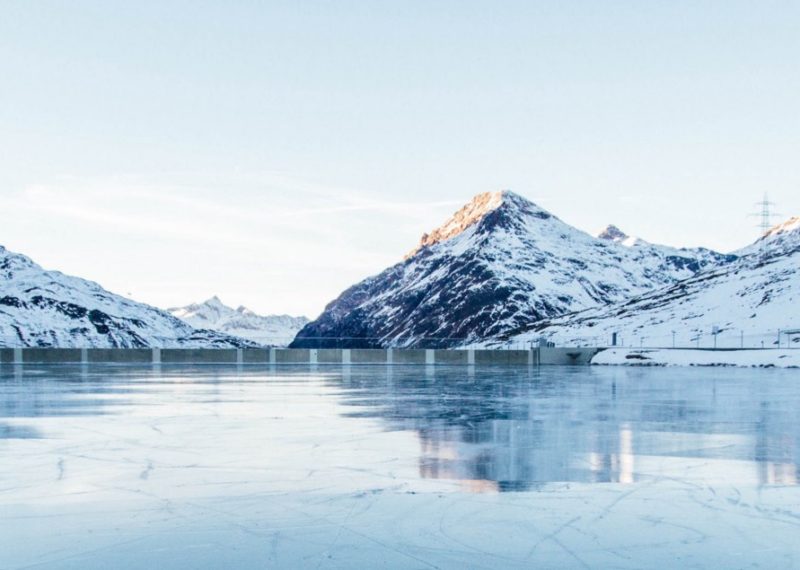A recently released study brought sobering news about the future effects of climate change, predicting they could be twice as bad as current models have projected under a “business-as-usual” scenario — and then some. Even if the world hits its 2 degree Celsius target, the paper — which appeared in the journal Nature Geoscience — warned that sea levels could rise six meters or more, large areas of the polar ice caps could collapse, the Sahara Desert could become green, and tropical forest borders could produce fire-dominated savanna. To obtain their findings, the researchers studied three well-documented historical warm periods: the Holocene thermal maximum, some 5,000–9,000 years ago, the last interglacial, 129,000–116,000 years ago, which were both caused by predictable changes in the Earth’s orbit; and the mid-Pliocene warm period, 3.3–3 million years ago, when atmospheric concentrations of carbon dioxide were similar to what they are today. Two of the study’s co-authors, Katrin Meissner, director of the University of New South Wales Climate Change Research Centre, and Alan C. Mix, distinguished professor of earth, ocean, and atmospheric sciences at Oregon State University, recently spoke with Nexus Media about the study, which was conducted by an international team of researchers from 17 countries. This interview has been edited for length and clarity.
What led you to conclude that existing models underestimate the seriousness of climate change, and why look to the past to make projections about the future?
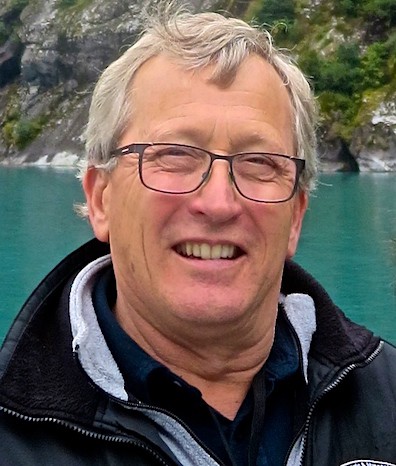
Alan C. Mix: There were lots of groups working on pieces of what warm climates look like. We realized someone had to put all these puzzle pieces together. Some motivation came from silly comments reported in the press like, ‘there is no global warming,’ or ‘it isn’t caused by CO2,’ or ‘it’s caused by CO2, but not by humans,’ or ‘we live through hot summers so what’s the big deal?’ None of that stuff, of course, is true but the press reports it. So we wanted to use real data, not models, to see what the impacts have been in past warming events. In most cases, humans — at least not as many, or with modern high-infrastructure civilizations and national borders and political problems — didn’t exist then, so we don’t know if they would have survived. But other plants and animals did, and we can see how ecosystems were affected. And we can ask whether models do a good job simulating those real-world conditions, or if they overestimate (or underestimate) changes. We need to know that stuff — what the impacts are, and whether the models are any good — so governments of the world can set rational policies.
Katrin Meissner: We tried to find episodes in the past that were 1.5–2C warmer than preindustrial levels, which means as warm as today’s climate and/or slightly warmer, but still within the target of the Paris Agreement. These episodes happened a long time ago, especially the ones with similar CO2 concentrations to today. To piece together the climate at this time, we use climate archives, for example sediment cores, ice cores, corals, pollen records, etc. These archives don’t have a very high temporal resolution, so we cannot reconstruct changes at the scale of decades or, in some cases, even hundreds of years. All we can do is to get a holistic picture of how a climate might look like in equilibrium: a climate that has been warm for hundreds or thousands of years.
The key word here is “equilibrium,” we are talking hundreds to thousands of years from now — not tomorrow. The recent CO2 changes are happening so fast that the climate system is still getting used to these changes, it is still adapting. To get into “equilibrium” will take a long time, hundreds to thousands of years.
What kind of “predictable” changes in the Earth’s orbit caused the warming in the first two periods?

KM: Orbital cycles and Milankovitch.
The shape of the Earth’s orbit around the sun and the inclination of the Earth’s axis in relation to its plane of orbit are constantly changing. The orbital shape can be more or less elliptical. There have been times in the past when Earth has received overall more — or less — solar radiation, depending on the shape of its orbit around the sun. These overall changes are very small though and not likely to impact climate significantly. More likely to impact climate are regional and seasonal changes in incoming solar radiation. These changes are defined by the inclination — or tilt — of the Earth and its wobble around its axis. For example, if the tilt is strong we would get warm summers and cold winters in both hemispheres. If on top of that the Northern Hemisphere is strongly tilted towards the sun at a point of time when Earth is at its closest position to the sun, we would get even warmer Northern Hemisphere summers. While the tilt won’t change the overall energy received from the sun, it can change the seasonality and the regional distribution of energy.
Let’s imagine that we slowly transition to a regime where Northern Hemisphere summers become warmer. That would lead to stronger snow and ice melt during the summer months at high latitudes. When snow and ice starts to melt, a white surface gradually changes to whatever is below, that is, rocks, soil, ocean, mostly darker colors than ice or snow. This triggers a feedback. White surfaces reflect incoming solar radiation — that’s why you burn so easily when you are skiing — while black surfaces absorb more of this radiation. That’s why it is a bad idea to cross an asphalt road barefoot in the summer, at least in Australia. Therefore, less incoming radiation will now be reflected and more radiation will be absorbed, which leads to further warming and further melting, which will lead to darker surfaces and so on. This is one of the feedbacks that act within the climate system.
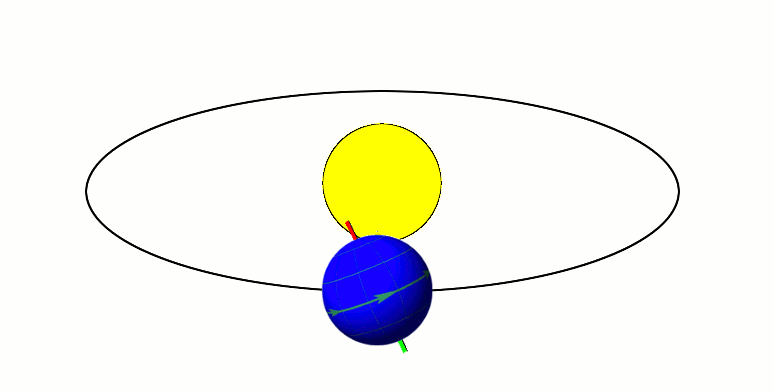
ACM: It is now generally known that the basic ice age cycles are associated with the so-called “Milankovitch” orbital wobbles, which arise because of the various gravitational pulls of all the planets in the solar system on each other. These cycles are rhythmic and predictable, and occur slowly. Basically the Earth wobbles slowly on its axis, like a child’s spinning top on the kitchen floor. The net result is changes in the shape of the orbit — from circular to elliptical — a “stretched” circle — and in the tilt of the polar axis relative to the plane of the orbit, and in the timing of the Earth-Sun distance relative to the seasons as the earth circles the sun. All of this creates changes in the way the earth collects sunlight, and that influenced climate. But it is still a bit unclear whether [the] climate changes directly in response to this change in seasonal heating, or indirectly, for example, as a result of natural CO2 changes triggered by the orbital changes. For this reason, we usually don’t say that the orbital changes force the ice ages, but instead that they pace the ice ages. The analogy is to a heart pacemaker, which sets the heart beat’s rhythm in cardiac patients but doesn’t actually force the heart to beat. Either way, this known creation of ice ages from very subtle external inputs shows that [the] global climate is quite sensitive to change when pushed even a little bit. And we’re talking about big changes in the past, like covering Canada and northern Europe with mile-thick ice and then turning around and melting nearly all of it, making sea level go up and down by more than 120 meters. That kind of sensitivity to change is a matter of concern regarding human CO2 emissions and the greenhouse effect. We know this changes the way the atmosphere collects heat, and based on our knowledge of the past, we know that the climate is sensitive to change, so it follows that our release of CO2 into the atmosphere will — indeed must — change the climate. The question is not whether this will happen, but how much? And how fast?
In the third period, what prompted such high levels of atmospheric carbon dioxide?
KM: I think the correct question here is: what prompted such low levels of atmospheric carbon dioxide in the past 2 million years.
The typical CO2 concentrations that Earth has experienced in the past 2 million years are almost an “anomaly” compared to the long term record. During these past 2 million years, Earth has switched between glacials — periods of time when large ice sheets were present in the Northern Hemisphere — and interglacials — periods of time without these ice sheets. We are currently in an interglacial.
The fact that greenhouse gas concentrations have been as high or higher in the past is unfortunately not a good reason to feel reassured about modern day climate change. One big difference is the rate of change. CO2 concentrations are changing much more rapidly than any documented change in the past. For example, 20,000 years ago, during the last glacial, cities like Chicago, Toronto and Montreal were under an ice sheet that was over 3 km thick. These huge ice sheets are gone now, mainly because of an increase of 100 parts per million in atmospheric CO2 over about 8,000 years. Recently, humans have added another 120 parts per million of CO2 to our atmosphere. What our oceans managed to do in 8,000 years, with large consequences to the environment, such as the melting of huge ice sheets, we did in less than 100 years.
It is an open question whether and how ecosystems will be able to adapt to such fast changes in temperature, precipitation and acidification. Life on Earth has been adapting to lower CO2 concentrations over the past 2 to 3 million years. The youngest period of time when CO2 levels were at today’s levels happened over 3 million years ago; that was when our ancestors were Australopithecus and still had to evolve to the genus Homo. The fauna and flora was very different from today’s.
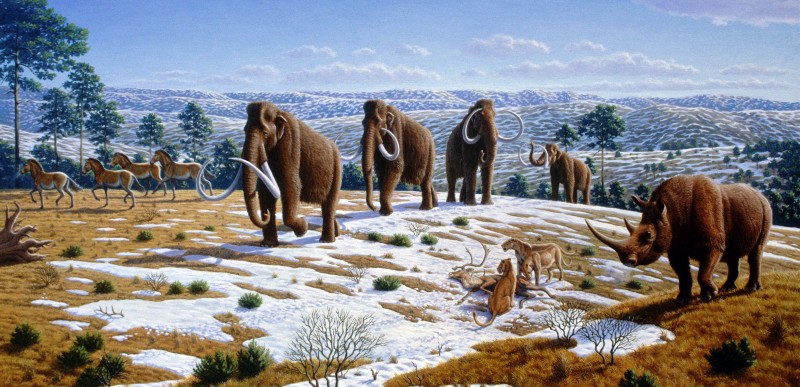
ACM: It is reasonably well known that in the Pliocene time interval, roughly 2–5 million years ago, CO2 was a bit higher than today. The exact cause isn’t known, but it came from some geologic reservoirs where CO2 is locked up today. These reservoirs are things like organic matter in soil and in sediments under the ocean. It isn’t a lot of carbon in every square meter, or square foot, but there is a huge area, so it adds up. Carbon is also stored today in permafrost, and in the deep ocean. The fact that the Pliocene was both a bit warmer than today and had a bit more CO2 in the atmosphere is important, because it shows that warmth, however it is triggered, can become self-sustaining by letting some of that locked-up carbon out into the atmosphere. In other words, the climate system isn’t “self-correcting.” It doesn’t automatically return to a state that looks like the one humans enjoyed as they built their modern civilizations. We used to think that. A few decades ago, there was a popular idea called “Gaia,” the Earth Goddess, which basically thought that the living Earth was self-correcting to stay within a narrow environmental range suitable for life. For the most part, those ideas have been abandoned. We now know the Earth has experienced some pretty large climate swings, and they likely involve release and uptake of CO2. So maybe life helps to stabilize climate on a very large scale, a Gaian idea, but on the scale that matters to us here and now, we know the system is sensitive to change because it has changed. So if Gaia is a Goddess, she certainly is fickle.
Couldn’t citing those previous warm periods give deniers the opportunity to argue that because climate has fluctuated in the past — which we survived — we will survive this too?
KM: Did we survive something similar? I am not sure. As far as ice cores go back, there is no episode with such rapid rates of increase in greenhouse gases. Before ice core records, the temporal resolution becomes more challenging, but even fast warming events seem to have happened on much slower timescales than what is happening today.
ACM: It’s wrong to say that because climate has changed in the past, either we aren’t causing climate change, or it is no big deal and we will survive. Quite the contrary. The evidence of past change shows that climate can change pretty wildly, given even a little push. And we are pushing it pretty hard. Sure, humanity survived some past climate change, but at least during the “Holocene” time when agriculture developed and civilizations flourished, climate has been relatively stable. And the smallish changes that occurred had a pretty major impact of biblical proportion… famines, floods, mass migration, heat waves, killing frosts. So maybe we survived. But it wasn’t fun. And some civilizations collapsed. I don’t think we want that.
We are changing climate much more, and much faster, and on a much larger scale, than anything humanity experienced in its early history. I’m discounting the Neanderthals who lived in southern Europe during the ice ages — I don’t want to be a cave man and I don’t think we want to go there. Although we have modern technology that can help us, we also have nearly eight billion people on the planet, and we are already seeing daily crises with refugees. So if climate change makes a region of the planet uninhabitable, those people can’t just pick up and go somewhere else. There is no place to go on an overpopulated planet. What will we do when we see hordes of climate refugees fleeing rising sea levels flooding their cities, or crop failure from heat stress, or insufficient water? Who is responsible? Who will take them? The issue of surviving climate changes in the past is a red herring that says nothing about today.
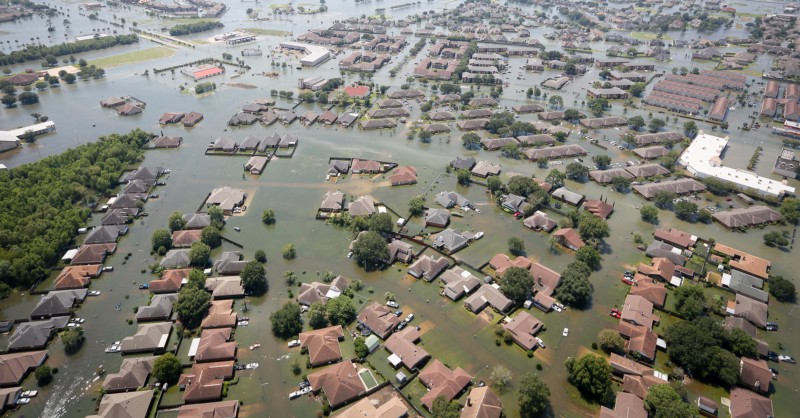
So, you’re saying if we keep emitting, it’s going to be far worse than in the past, or than current models of the future suggest?
KM: Yes, it will be worse. It is very risky to keep emitting because of the rate and magnitude of change. As far as we know today, there has been no similar event in terms of rate of change in climate history. What we refer to as “fast” changes in the geological record happened on much slower time scales than what we see today. It is an open question if and how ecosystems will adapt to such fast changes.
If we realize in the near future that these changes are not acceptable, we won’t be able to quickly stop or reverse the changes. Many components of the climate system adapt slowly. The ocean, for example, has a very high heat capacity. It takes a long time for the ocean to warm up, but it then also takes a very long time for it to cool down again. The climate system is still in the process of adapting to the changes in atmospheric greenhouse gases. Even if we decide to stop all emissions, the climate will continue to adapt to the changes we already caused.
ACM: We are forcing changes much faster and on a scale that is much larger than any natural climate changes experienced by humanity. Just look at a graph of CO2 change through time, say over the past half-million years from ice core data, and it bops up and down like a teenage head listening to the pop music charts. Then compare that to the ongoing CO2 rise caused by people, and it is off-the-charts extreme, headed straight up and off the page in a blink. Climate takes some time to adjust, and it will eventually catch up to the huge changes in CO2 we are causing. Scientists call that the climate “commitment,” meaning that we have already committed to future climate change by the CO2 we’ve already put into the atmosphere. So again, it is way faster and way bigger than anything humans have experienced in the history of civilization.
The more CO2 we put in the atmosphere, the hotter it will get. But the system is a bit non-linear, meaning that the change in temperature may respond at different rates or amounts to additional increments of CO2. It may cross a “tipping point,” where things get pretty crazy. You can think about this as if you are walking along on level ground near the Grand Canyon, doing just fine, and then casually take one more step and fall off a cliff. So the first steps moved you forward and didn’t do all that much, but the next step caused a disaster. In that example, it would be irreversible. And not fun. Climate is like that. There is concern that we will keep plodding along, releasing a bit more CO2 each year, until — wham — we cross the tipping point and realize all the earth’s ice sheets are going away and we can’t get them back, and sea level is going to keep rising for thousands of years. Although we can’t stop climate change entirely, we need to choose whether we will slow down and eventually stop emitting CO2, or just keep going until we cross a point of no return.
This interview was conducted by Marlene Cimons, who writes for Nexus Media, a syndicated newswire covering climate, energy, politics, art and culture.

